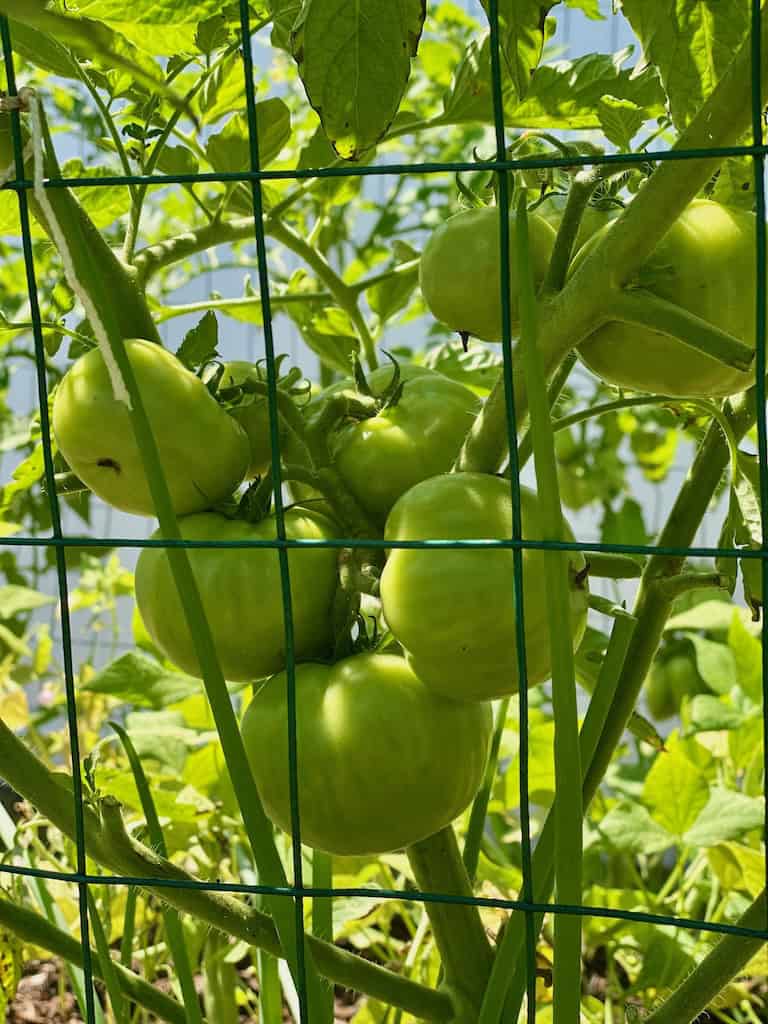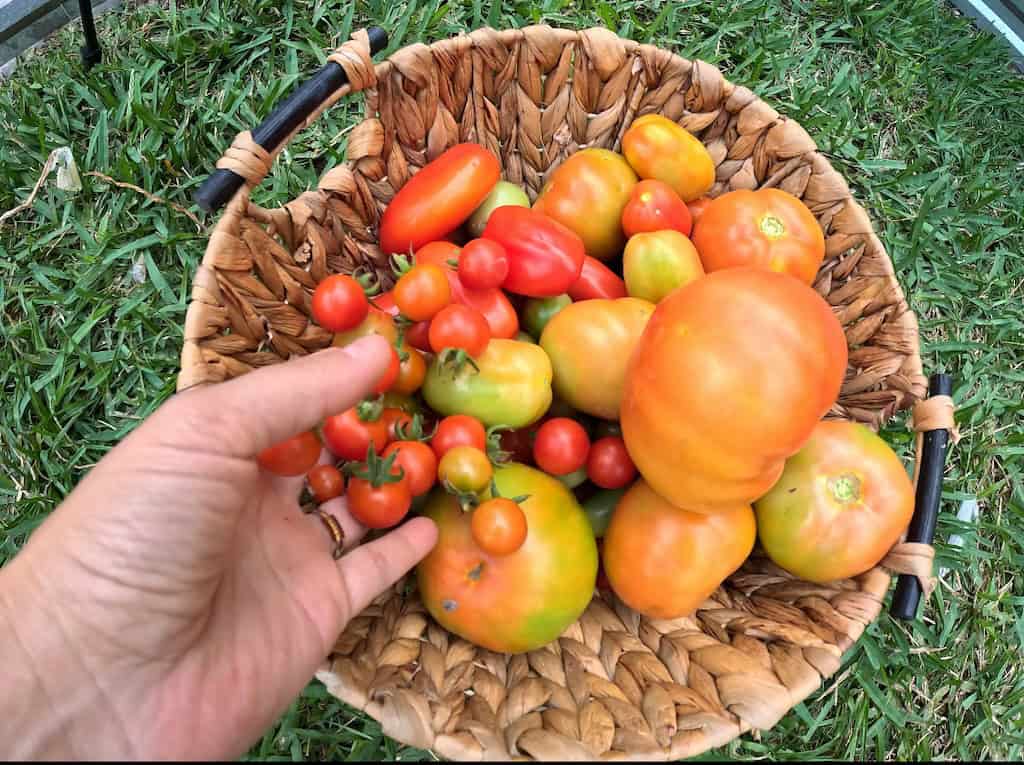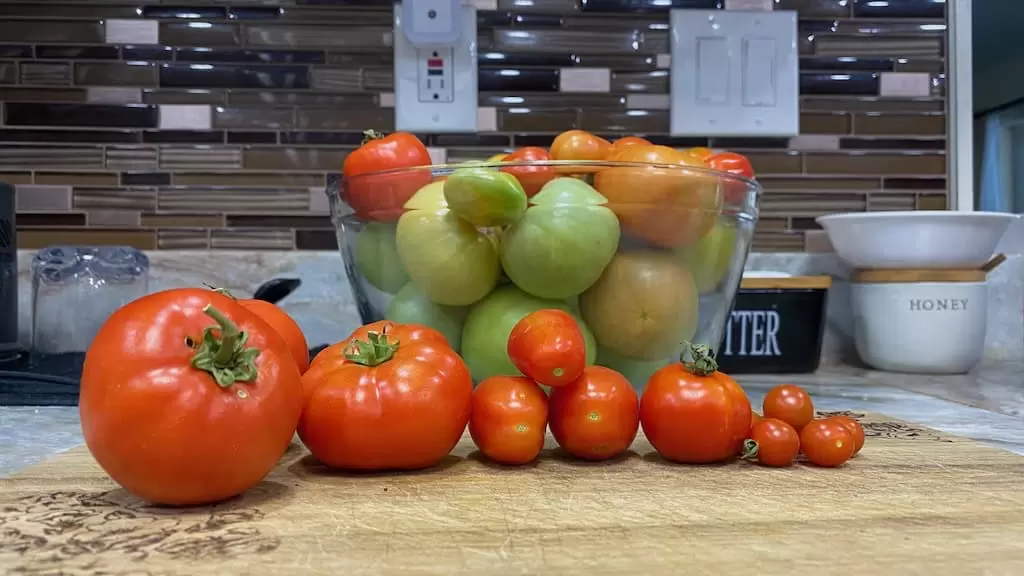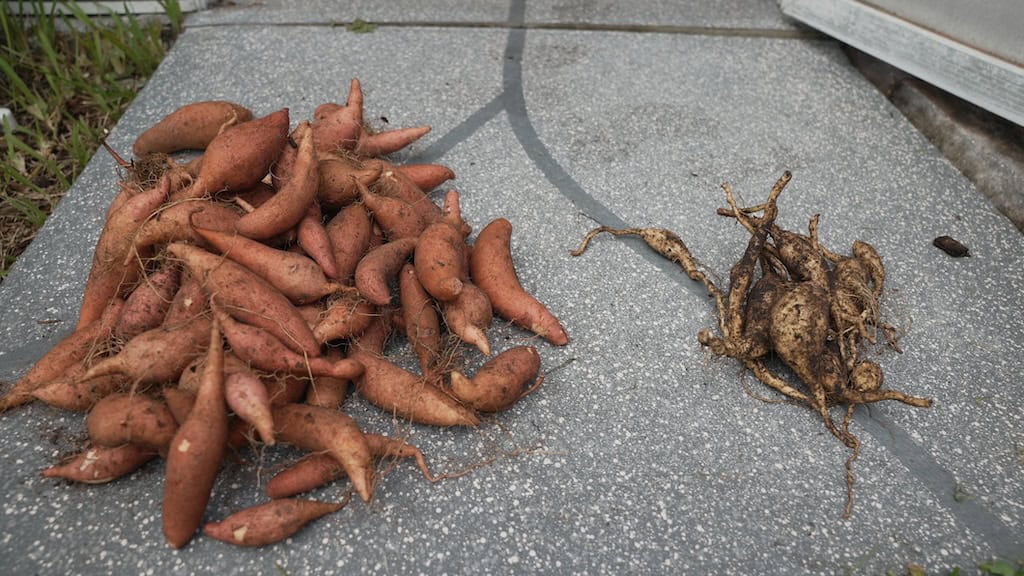Tomatoes are the ultimate money-saving crop for your garden. If you’ve noticed the rising cost of fresh produce, growing tomatoes is a simple and rewarding way to cut down on grocery bills. Not only can you enjoy a steady supply of fresh tomatoes, but you’ll also save money on tomato-based products like sauces, salsas, and soups.
In this guide, I’ll show you why tomatoes deserve the title of the ultimate money-saving crop by breaking down the costs, tips for growing them successfully, and how they can save you money season after season.
This post may contain affiliate links. Read full disclosure here.
Table of Contents
The Cost of Growing Tomatoes
Before diving into the savings, it’s important to understand the costs involved in growing tomatoes. Here’s a breakdown of the basics:
- Seeds or Starts:
- A packet of seeds costs from a seed company like MIGardener are about $2.00 and contains 20–30 seeds, enough for multiple tomato plants.
- For beginners, starts (young plants) are easier to manage and cost about $5 each.
- Containers:
- A 5-gallon bucket works well and costs around $4, though you can often find free buckets from bakeries or grocery stores.
- Fabric grow bags are another excellent option, costing about $20 for a pack of ten.
- Potting Soil:
- A small bag of potting soil costs $4–$6. Compost or soil mixes purchased locally can save money if you’re planting several tomatoes.
- Fertilizer:
- Fertilizer costs about $8 for a small granular or liquid bottle. Since tomatoes don’t require much fertilizer, one bottle can last multiple seasons.
With an upfront cost of around $21–$22 for one tomato plant, the investment is small compared to the potential savings.
How Much Can You Save?

A single tomato plant can produce 10–20 pounds of fruit in one season. Let’s assume the average yield is 15 pounds.
- At $2.50 per pound (the average price for tomatoes), 15 pounds equals $37.50.
- This means your plant only needs to produce about 8–9 pounds to break even on the initial $22 investment.
Once you pass the break-even point, every tomato harvested saves money. The more plants you grow, especially if started from seeds, the greater the savings.
Tomatoes as a Money-Saving Crop for Your Pantry

Tomatoes aren’t just a fresh food item—they’re one of the most versatile crops in the kitchen. This versatility is what makes them the ultimate money-saving crop. Instead of purchasing tomato-based products, you can use your harvest to make:
- Spaghetti sauce
- Salsa
- Ketchup
- Tomato puree
- Bloody Mary mix
- Barbecue sauce
- Sundried tomatoes
If you enjoy preserving, you can take your savings further by canning diced tomatoes, tomato paste, or sauces. These pantry staples last months and provide homemade alternatives to store-bought products.
In my household, we use tomato products daily—whether it’s diced tomatoes in soups, barbecue sauce on chicken, or sundried tomatoes in salads. Growing our own tomatoes has significantly reduced our grocery bills.
Why Tomatoes Are Easy to Grow

One of the reasons tomatoes are such a great money-saving crop is how easy they are to grow. While starting seeds requires some care (ensuring proper moisture, heat, and sunlight), once the plants are established, they’re incredibly resilient.
- Hardy Plants: Tomatoes can tolerate transplanting and pruning. While they dislike cold temperatures, proper care and protection can keep them producing.
- Florida Planting Schedule: In Zones 9A–11, the best times to start tomatoes are August (for fall) and January (for spring). This timing ensures plants produce before summer’s heat or winter’s cold takes hold.
Determinate vs. Indeterminate Tomatoes
Understanding the difference between determinate and indeterminate varieties helps you choose the best tomatoes for your garden and goals.
- Determinate Tomatoes:
- These compact plants grow to a set size and produce all their fruit at once, usually within 1–2 weeks.
- Ideal for making large batches of tomato products like sauces or salsas.
- Minimal pruning required.
- Indeterminate Tomatoes:
- These plants grow continuously, producing fruit throughout the season.
- Perfect for a steady supply of fresh tomatoes over several months.
- Require regular pruning to manage growth.
Both types can be incredibly productive, but the best choice depends on your needs. Determinate tomatoes are better for canning and preserving, while indeterminate varieties provide a continuous harvest.
Choosing the Best Tomato Varieties

Picking the right varieties is key to maximizing your success and savings. Some of my favorite varieties for Florida include:
- Vine-Ripe and Paste Tomatoes: Neptune, Homestead, Roma, and Kewalo
- Cherry and Grape Tomatoes: Red Currant, Super Sweet 100s, and Red Pear
- Beefsteak Tomatoes: Better Boy, Cherokee Purple, and Mortgage Lifter
Cherry tomatoes are particularly reliable in Florida’s climate. They’re less prone to cracking and disease and tend to produce abundantly even in challenging conditions.
Saving Money with Tomato Seeds
Another way tomatoes shine as a money-saving crop is through seed-saving. By saving seeds from your best-performing plants, you can grow future crops for free.
- Choose Your Tomato: Wait for a ripe, healthy tomato from a strong plant.
- Collect the Seeds: Scoop seeds into a cup with water and stir daily for 2-4 days to ferment the gelatinous coating.
- Dry the Seeds: Rinse the seeds, spread them on a paper towel, and let them dry completely.
- Store Properly: Place the dried seeds in a paper envelope and label them for next season.
Saving seeds not only cuts costs but also allows you to improve your plants over time by selecting the healthiest, most productive tomatoes.
If you’re looking for a rewarding and cost-effective crop to grow, tomatoes are the perfect choice. Happy gardening!




